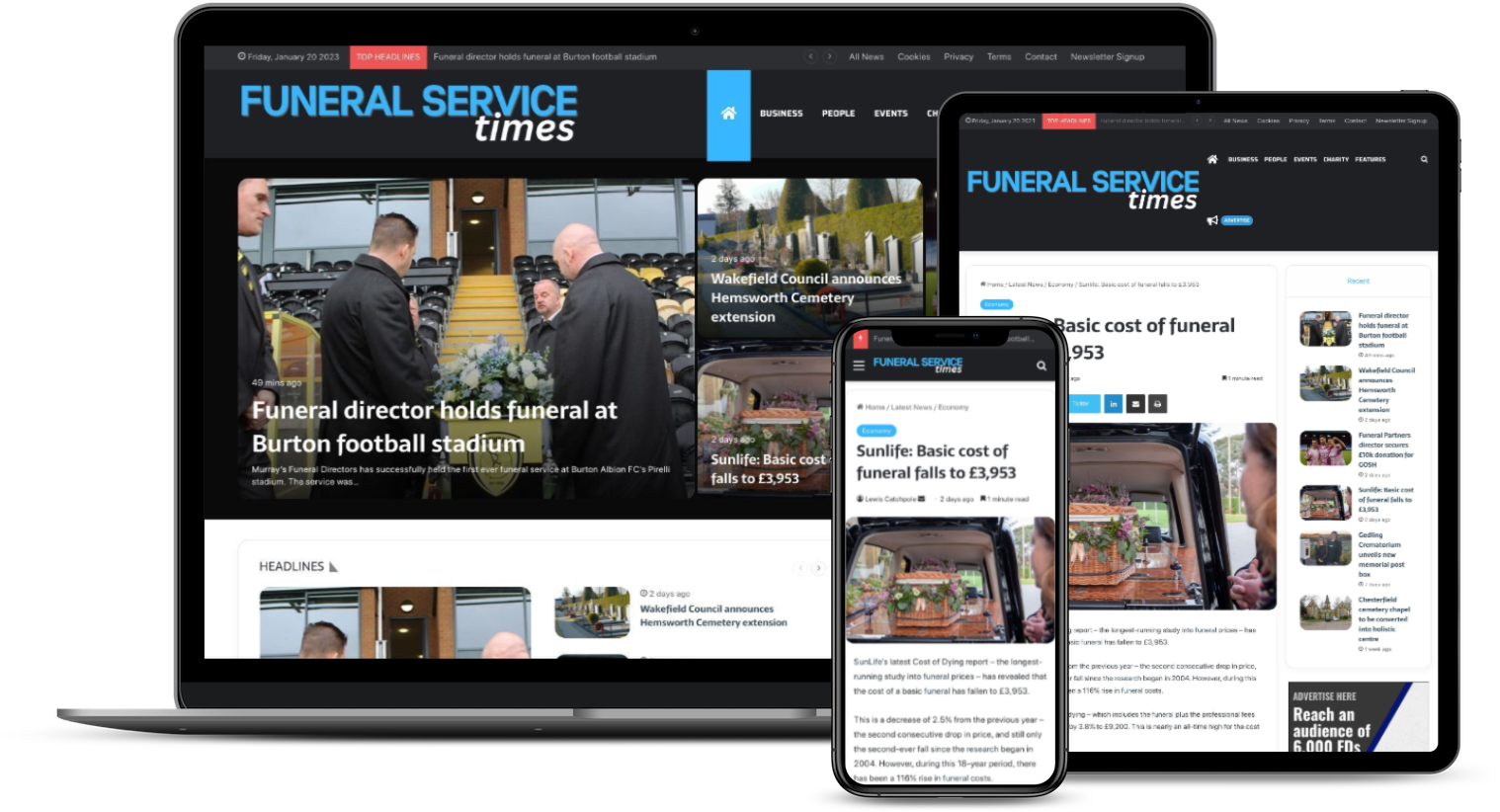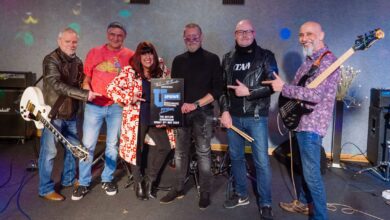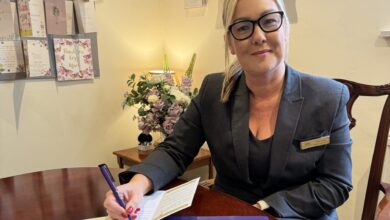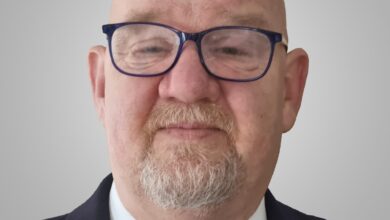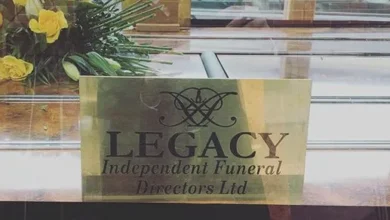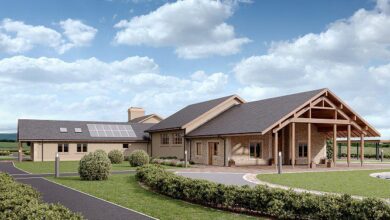Compassion by name, compassion by nature
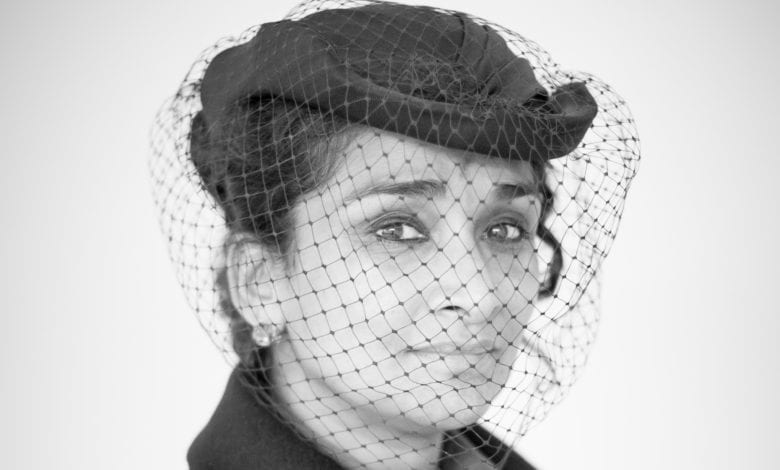
Hasina Zaman started Compassionate Funerals in 2012, having spent 20 years working as a teacher. She saw the potential she could bring to a sector that had previously been male-dominated. Zaman and her Bangledeshi muslim background has made her one of the few female funeral directors in the industry.
Having experienced two personal funerals which left her dissatisfied, Zaman said her priority was to put compassion first and foremost at the heart of the company. Steering away from usual package deal funerals, Compassionate Funerals’ personal touch and deep routes embedded in the East London community cater for all religious beliefs and requests.
The effect of Covid-19 on the business hit its peak in April, with Zaman describing it as the “toughest time” for the company and the industry. Over her eight years working in the funeral sector, Zaman discusses the challenges she has faced, and what the sector needs to do in order to evolve for the better.
Can you tell me about the history behind Compassionate Funerals
I started Compassionate Funerals in 2012, with no prior business experience. It was with the intention to fulfil a gap in the low-cost sector and to serve a diverse community where compassion was the essential form of service, as opposed to filling a coffin, grave or headstone service.
What inspired you to become a funeral director?
I think the main thing was that I thought I could really make a difference if I could learn this trade, because the pain point is so high and I thought I could turn that around by providing a service. In terms of my own experience point of view, I was actually quite personally dissatisfied with the sector. I had two deaths in 1995 and then in 1997 which led me to realise that I could probably make a difference if I gave it a go.
And also when I realised that it is a very male-dominated sector, I realised that me being of muslim, asian-Bangladeshi origin, I could stick out like a sore thumb and use that to my advantage.
You cater to all types of religions and requests. Was that something you thought was important, to be inclusive to all?
Absolutely. We wanted inclusivity, we wanted to wear it openly on our arms and openly in our content, because I didn’t want to do this thing in the funeral sector called ‘packages’.
I’m not saying all businesses in the industry do it but this is what I’m finding. We have these packages and you have to fit into it, but real life doesn’t work like that. People don’t do that, they want what they want. What I didn’t want to do is have these funerals that would be homogenous and the thing is, where we are based in east London, we have such a mixed range of communities.
To turn around and say to them, “OK, well you can only do this”, would be doing a disservice to the community and we would be broke. It’s really important that we get that attention to detail with the culture, with the faith and with the history, as well as the relationships.
We’ve got two Hindu funerals going on this week and it’s really important that we set that detail absolutely spot on for each of those funerals and each of those funds, for example. They’re not the same – there’s diversity within the diversity and it’s understanding those nuances that makes us able to cater for the communities.
How do you think your approach to the industry differs from others?
I would say what makes us stand out is that we come from a place of heart. I know that sounds a bit obvious but we genuinely care, we don’t generally serve on the place of profit but from the place of heart.
Funeral services are often under pressure to hit numbers and hit targets. I think it is not who we are. We are today an embedded part of the community that provides a very important service. We really keep ourselves in front of mind but that’s who we are as a team and as a company. We don’t want to lose sight of that and become a digital corporate glamorous service.
We are very hands on and down to earth, from taking people back to whatever they believe in, whether it’s through burial or cremation or creator, or in the humanist form, or people who don’t believe there is any life after death. It’s just really knowing what is our place within the community and society and I think we’ve done that very well.
We also try to do our best to match the service with the client. For example, in an Indian service, we would make sure that the priest is from that particular community so they understand the cultural differences. I would say that’s how we would stand out because we would make sure that our service has that level of specialism.
What advice would you give to other funeral directors to help them offer a more compassionate service?
I would say to other funeral directors that they need to come from the heart to infuse their whole service with compassionate care, from the point where somebody takes a phone call to the actual funeral service.
There is so much research on being part of a compassionate community. It really is the make or break. Whether you feel part of something bigger or whether you feel really isolated. I think that we can, as an industry, be real leaders in creating compassion. To see the client as part of our team and as part of the collective community, and not to see them as a transactional point of contact.
What’s happened over the years is that we’ve been pushed into much more corporate faces and moved away from that integral part of the community. I think there’s been pressure on the corporate world for us to become much more corporate to basically make it an easy functioning process transaction.
What has been the most unconventional request?
We had a Scottish gentleman who died last year and he had a humanist service and had an artist come in and do something called a death mask. I don’t know what they’re going to do with that particular piece of art, but they created this mask that is usually a mask of the face when the person has died.
They came and took a cast of that person’s face and they made it with paint and artistry and they made that particular mask look like that person. His funeral was sensational and had something like 500 people that attended.
Another one that comes to mind is a lady who again was an artist. She actually pre-planned her funeral in great detail. She knew she was going to die. She had cancer so she pre-bought her grave in a natural burial ground, and she was really into ancient Egypt an Egyptian history. She wanted to be mummified, so we used really wide bandages, something like 75 or so bandages to wrap her body.
She left great instructions – I think there was like 10 pages of images and illustrations with point-by-point instructions on each page. She also had a death mask that she already did herself. Because she had cancer, she used her own hair to actually create these really beautiful beads that would look like she had actual hair, like cornrows, or plaited hair. She also made lots of her own jewellery that we had to put on her body. She had these tiny little artefacts that we had to place a different point of the coffin.
We had another person from the arts industry who lived on a boat on the River Thames and his wife wanted to have his final journey along the River Thames. So the funeral started from their homes on St Catherines Dock and came out towards a water sports centre, it was carried by our staff into something called The Walking Water Pump centre and that’s where they had their service.
I wouldn’t say it was a funeral service, it was like having a show. It was just very well put together and again that was on a Saturday so we had lots of ample time to try and do the setup which took five hours.
What has been the toughest period?
April was by far the toughest I think. Just being able to be in that space and grow and make sure that we could serve the clients under a real difficult situation. Another tough part was really being able to grow the business from nothing and not from coming from a background or industry or having that white male privilege.
I would say the last classic point was to stay small but great. A lot of the problems with business leaders is that they grow too fast and then what happens is you sort of sell your soul, forcing the position to grow to the investors expectations.
We just want to say small and great and be one mile deep and really make an impression on our clients.
How has Covid-19 overall affected your business and the industry?
I mean I think Covid has definitely pushed us and seriously challenged us to work in a potential zone, whether we want it or not. Because we decided to stay open as a service, we said we’ve got to do whatever the London mortality pandemic team is telling us to do, and whatever the government set up tells us to do.
We were not interested in ourselves but we want to keep the public safe, keep the family safe and communicate that service. It didn’t matter again if that was digitally, or where possible verbally, and not always face to face.
How would you like to see your industry and your business developed over the upcoming years?
First of all, I would like to become an industry leader of embedding compassionate care and fully flying the flag of diversity and celebrating our differences. I want to see three things change. What I wanted to do is to employ people of diverse backgrounds from their local community.
It makes me a combination of sad and angry when I see these funeral directors at black or caribbean or african funerals and they just don’t have any people in the team from that background. I want funeral directors to employ local and diverse people.
The second point I want to change is for the regulator to embrace and embed the diversity gap. The last thing is to scrap packages and to serve from the place of heart and compassion, again going back to the basics, the old way of doing funerals.
I think we should ban package systems because I have to say we probably get 70% of our work from just being on Google and we’ve not done any advertising, it’s just all been organically grown. Looking at what the community wants and needs, looking at that value and and going back to the community.

